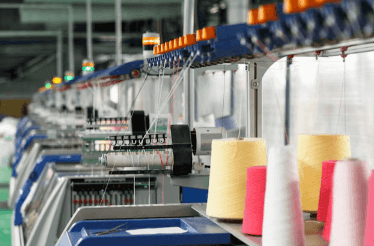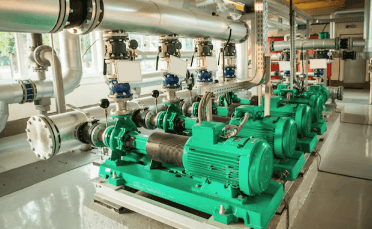Question
a.
To prevent milk from charring
b.
To have a better temperature control
c.
The temperature of food in the film = temperature of the wall which is very high. Hence, jacketed vessels are needed
d.
All of the mentioned
Posted under Food Engineering
Interact with the Community - Share Your Thoughts
Uncertain About the Answer? Seek Clarification Here.
Understand the Explanation? Include it Here.
Q. Why is better to use a Jacketed vessel in the dairy industry than a stainless steel container directly?
Similar Questions
Explore Relevant Multiple Choice Questions (MCQs)
Q. Statement 1: hd/k is _____
Statement 2: _____ is the ratio of convective heat transfer to conductive heat transfer.
View solution
Q. The reciprocal of heat transfer co-efficient is _____
View solution
Q. Statement 1: Film-type condensation has a higher heat transfer co-efficient than drop-wise condensation.
Statement 2: Drop-wise condensation is easier to maintain than Film-type condensation
View solution
Q. Statement 1: Drop-wise condensation takes place on a smooth surface.
Statement 2: All the resistance to heat transfer lies in the film formed during Film-type condensation.
View solution
Q. According to Nusselt’s film theory, the film thickness decreases as we move from bottom to top. The heat transfer increases.
View solution
Q. Statement 1: Unsteady state heat transfer equation can be used when there is negligible internal resistance.
Statement 2: Unsteady state heat transfer equation can be used for liquid food items which are well stirred, because, temperature gradient within won’t be there.
View solution
Q. Statement 1: In nusselt’s film theory, velocity of the falling film is not affected by the velocity of the vapors.
Statement 2: LMTD can be used provided the overall heat transfer co-efficient is constant over a large range of temperatures.
View solution
Q. Find heat transfer in an agitated jacketed vessel if Nᵣₑᵢ is 1.5 * 105 and Nₚᵣ is 20.
View solution
Q. Which of the following is NOT a real dimensionless number?
View solution
Q. Statement 1: Nₚᵣ= (Cₚm)/kl
Statement 2: Stanton number is a product of Nᵣₑ and Nₚᵣ.
View solution
Q. Statement 1: G is known as the mass flux and it is the product of density and velocity.
Statement 2: Grashof number is associated with forced convection.
View solution
Q. Фᵥ is generally taken as 1 in food processing as generally very high wall temperatures aren’t reached and hence (µ/µw) * 0.14 is 1 as there isn’t much difference in µ and µw.
View solution
Q. Statement 1: Sieder-Tate and Dittus-boelter equations imply only to laminar flow conditions.
Statement 2: Under laminar conditions, the same equation applies both to Newtonian and Non-Newtonian fluids.
View solution
Q. Dittus-boelter equation is applicable for fluids with phase change.
View solution
Q. Statement 1: Radiation is the transfer of heat by electromagnetic waves.
Statement 2: When heat is radiated from a hot source, the amount of heat received by the body depends on the nature of the body.
View solution
Q. Statement 1: Radiation needs a medium to travel.
Statement 2: Thermal radiation takes place at a certain temperature for every body.
View solution
Q. Statement 1: Radiation is NOT heat.
Statement 2: Maximum value of absorptivity is 1.
View solution
Q. The emission of radiation by any body is independent of the radiation by any body next to it.
View solution
Q. A food industry keeps food cool in a very crude manner, by radiation. It paints its walls white and not black, because of _____
View solution
Q. Which of the following reason does NOT affect radiation between two parallel bodies?
View solution
Recommended Subjects
Are you eager to expand your knowledge beyond Food Engineering? We've handpicked a range of related categories that you might find intriguing.
Click on the categories below to discover a wealth of MCQs and enrich your understanding of various subjects. Happy exploring!








